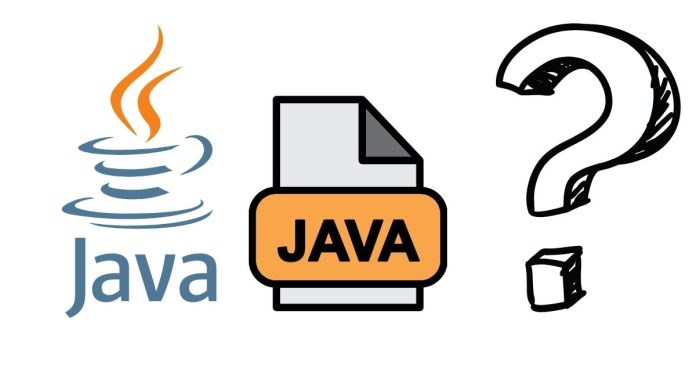Java Collections Framework (JCF) is one of the most crucial topics for Java developers, especially during interviews. Its versatility, coupled with its role in efficient data management, makes it a favorite among interviewers. Whether you’re a fresher or an experienced professional, being well-versed in Java Collections can significantly enhance your chances of landing your dream job.
This blog compiles a list of frequently asked Java Collections interview questions for 2024, covering fundamental to advanced topics, along with concise explanations.
1. What is the Java Collections Framework?
The Java Collections Framework (JCF) is a set of classes and interfaces in the java.util package that provides an architecture to store, manipulate, and retrieve data efficiently. It includes:
- Interfaces like
List,Set,Map, andQueue. - Classes like
ArrayList,HashSet,HashMap, andPriorityQueue.
2. What are the key differences between Array and ArrayList?
| Feature | Array | ArrayList |
|---|---|---|
| Size | Fixed | Dynamic |
| Type | Homogeneous elements | Can hold heterogeneous types (via generics) |
| Performance | Faster for primitives | Slower due to boxing/unboxing |
| Methods | No built-in methods | Rich set of methods like add(), remove() |
3. Explain the difference between HashMap and Hashtable.
| Feature | HashMap | Hashtable |
|---|---|---|
| Thread Safety | Not thread-safe | Thread-safe |
| Performance | Faster (no synchronization overhead) | Slower (due to synchronization) |
| Null Keys/Values | Allows one null key and multiple null values | Does not allow null keys or values |
| Inheritance | Introduced in JDK 1.2, part of JCF | Legacy class from JDK 1.0 |
4. How does HashMap work in Java?
HashMap stores key-value pairs using a hash table. The process involves:
- Hashing: HashMap computes the hash code of the key to determine its bucket location.
- Buckets: Each bucket contains a linked list to handle collisions.
- Collision Resolution: If multiple keys map to the same bucket, they are stored in a linked list or tree structure (from Java 8).
- Operations:
- On
put(), the key-value pair is stored in the bucket. - On
get(), the key’s hash code is used to locate the bucket, and the key is compared to fetch the value.
- On
5. What is the difference between List, Set, and Map?
| Feature | List | Set | Map |
|---|---|---|---|
| Duplicates | Allows | Does not allow | Keys are unique; values can be duplicate |
| Order | Maintains insertion order | Does not guarantee order | Order depends on the implementation (e.g., LinkedHashMap maintains order) |
| Key-Value | Single collection | Single collection | Key-value pairs |
| Examples | ArrayList, LinkedList | HashSet, TreeSet | HashMap, TreeMap |
6. What is the difference between ArrayList and LinkedList?
| Feature | ArrayList | LinkedList |
|---|---|---|
| Underlying Data Structure | Resizable array | Doubly linked list |
| Insertion/Deletion | Slow (shifts required) | Faster (node updates only) |
| Access Time | Faster (indexed access) | Slower (sequential traversal) |
| Memory Usage | Less memory overhead | More memory (due to pointers) |
7. What is the difference between Comparable and Comparator?
| Feature | Comparable | Comparator |
|---|---|---|
| Package | java.lang |
java.util |
| Method | compareTo() |
compare() |
| Purpose | Defines natural order | Defines custom order |
| Usage | Implemented by objects | Used as a separate class |
Example:
- Comparable:
class Student implements Comparable<Student> {
int age;
public int compareTo(Student s) {
return this.age - s.age;
}
}
- Comparator:
class AgeComparator implements Comparator<Student> {
public int compare(Student s1, Student s2) {
return s1.age - s2.age;
}
}
8. How does ConcurrentHashMap differ from HashMap?
| Feature | HashMap | ConcurrentHashMap |
|---|---|---|
| Thread Safety | Not thread-safe | Thread-safe |
| Concurrency Level | Not applicable | Segments allow multiple threads to operate |
| Performance | Better in single-threaded | Better in multi-threaded environments |
9. What is the difference between fail-fast and fail-safe iterators?
| Feature | Fail-Fast | Fail-Safe |
|---|---|---|
| Behavior | Throws ConcurrentModificationException |
Allows modifications during iteration |
| Examples | ArrayList, HashMap |
ConcurrentHashMap, CopyOnWriteArrayList |
10. What is the role of the LinkedHashMap class?
LinkedHashMap is a subclass of HashMap that maintains the insertion order of elements. It is useful when you need a predictable iteration order while leveraging the performance of a hash table.
11. How do TreeSet and TreeMap work?
- TreeSet: Implements the
Setinterface and stores elements in a sorted order using a Red-Black Tree. - TreeMap: Implements the
Mapinterface and stores key-value pairs in a sorted order based on keys.
Conclusion
Java Collections Framework is a core concept every Java developer should master. These questions and answers will help you prepare for your next interview in 2024, covering both basic and advanced topics. By understanding these concepts deeply, you’ll demonstrate your expertise and problem-solving skills to potential employers.
Keep practicing, and good luck with your Java journey!



